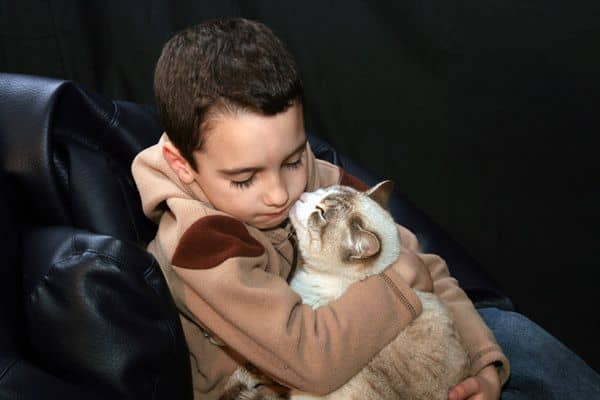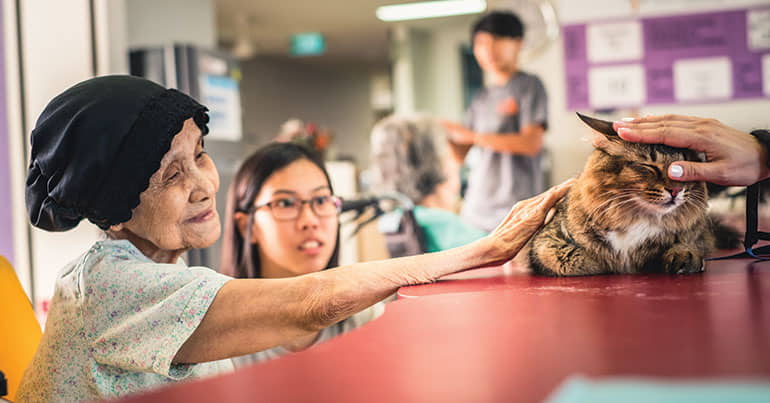A cat can be more than a cute and adorable pet – she can provide real therapy.

The Healing Power of the Purr
A cat can be more than a cute and adorable pet – she can provide real therapy.
Picture this. You come home feeling like this is one of the worst days of your life. This international non-profit organization is dedicated to improving people’s health and well being, with the help of therapy animals. Your cat gives you a quick meow and jumps to your lap. As you run your fingers through her soft coat, she purrs and problems don’t seem so bad. You relax, thankful that your feline friend knew exactly what you needed. This common scenario is the basic idea behind therapy cats and Animal Assisted Therapy.

Now, Animal Assisted Therapy doesn’t mean your cat will ask you to lie on a couch and talk about your childhood. Animal Assisted Therapy is defined as the use of designated animals that are trained to help treat people with a variety of different ailments. The therapy animal is directed by a health/human service professional with specialized expertise, and is designed to promote improvement in human physical, social, emotional and/or cognitive functioning.
Although dogs have more traditionally been recruited as therapy animals, cats are being used more and more. According to the Delta Society, one of the leading animal/human health benefits organizations, the presence of an animal produces positive results in safety, self-esteem and in dealing with loneliness and depression.
This makes a cat the ideal therapy animal for the elderly, especially nursing home residents. Some nursing homes even have cat residents who wonder from room to room visiting with people. Therapy cats are also valuable when interacting with Alzheimer patients, by stimulating both memory and forgotten emotions.

How a Cat Becomes a Therapy Animal
Cats chosen to be therapy animals must meet certain criteria. They should end up being of a laid-back, gentle temperament, tolerant of new circumstances and, of course, be people friendly. For these reasons, retired show cats have been used primarily, but even-tempered American shorthairs may also qualify.
Before a cat enters an Animal Assisted Therapy program, she must first go to a veterinarian and make sure her shots are up-to-date. If she’s physically sound, then training begins. Training programs typically include being exposed to loud noises, crowds and frequent handling.

After this training, a cat is accompanied by an animal-assisted therapist and visits the facility sheâll be living or working in. There, cat and trainer meet with the person in charge and discuss what the overall goals of the therapy are. Once a cat has met certain criteria, she’s ready to do her part as a good citizen, providing unconditional love and support to someone in need.
For more information about Animal Assisted Therapy, visit the Pet Partners. Work is stressing you out, bills are due and everything that can go wrong has.
Wondering about 5 Cat Urine Odor Removal Tips? Check it out on our latest post!
